
The National Reconnaissance Office (NRO) is a member of the United States Intelligence Community and an agency of the United States Department of Defense which designs, builds, launches, and operates the reconnaissance satellites of the U.S. federal government, and provides satellite intelligence to several government agencies, particularly signals intelligence (SIGINT) to the NSA, imagery intelligence (IMINT) to the NGA, and measurement and signature intelligence (MASINT) to the DIA.

STS-28 was the 30th NASA Space Shuttle mission, the fourth shuttle mission dedicated to United States Department of Defense (DoD) purposes, and the eighth flight of Space Shuttle Columbia. The mission launched on August 8, 1989, and traveled 3,400,000 km (2,100,000 mi) during 81 orbits of the Earth, before landing on runway 17 of Edwards Air Force Base, California, on August 13, 1989. STS-28 was also Columbia's first flight since January 1986, when it had flown STS-61-C, the mission directly preceding the Challenger disaster of STS-51-L. The mission details of STS-28 are classified, but the payload is widely believed to have been the first SDS-2 relay communications satellite. The altitude of the mission was between 295 km (183 mi) and 307 km (191 mi).
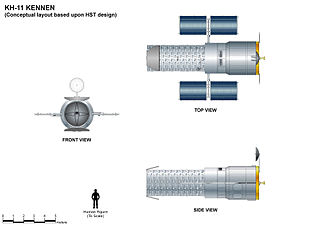
The KH-11 KENNEN is a type of reconnaissance satellite first launched by the American National Reconnaissance Office (NRO) in December 1976. Manufactured by Lockheed in Sunnyvale, California, the KH-11 was the first American spy satellite to use electro-optical digital imaging, and so offer real-time optical observations.

Space Launch Complex 6 at Vandenberg Space Force Base in California is a launch pad and support area. The site was originally developed for Titan IIIM rockets and the Manned Orbiting Laboratory, but these were cancelled before construction of SLC-6 was complete. The complex was later rebuilt to serve as the west coast launch site for the Space Shuttle, but went unused due to budget, safety and political considerations. The pad was subsequently used for several Athena rocket launches before being modified to support the Delta IV launch vehicle family, which used the pad since 2006. The pad sat vacant for a few months after the launch of NROL-91 on September 24, 2022. On April 24, 2023, SLD 30 announced that they had leased SLC-6 to SpaceX.

United Launch Alliance, LLC (ULA) is an American aerospace manufacturer, defense contractor and launch service provider that manufactures and operates a number of rocket vehicles that launch spacecrafts into orbits around Earth and other bodies in the Solar System.
Magnum was a class of SIGINT spy satellites reportedly operated by the National Reconnaissance Office (NRO) for the United States Central Intelligence Agency (CIA). The program remains classified, and the information that exists is speculative.
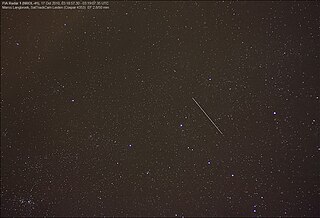
Future Imagery Architecture (FIA) was a program awarded to Boeing to design a new generation of optical and radar imaging US reconnaissance satellites for the National Reconnaissance Office (NRO). In 2005 NRO director Donald Kerr recommended the project's termination, and the optical component of the program was finally cancelled in September 2005 by Director of National Intelligence John Negroponte. FIA has been called by The New York Times "perhaps the most spectacular and expensive failure in the 50-year history of American spy satellite projects." Despite the optical component's cancellation, the radar component, known as Topaz, has continued, with four satellites in orbit as of February 2016.
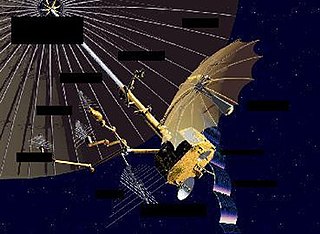
Orion, also known as Mentor or Advanced Orion, is a class of United States spy satellites that collect signals intelligence (SIGINT) from space. Operated by the National Reconnaissance Office (NRO) and developed with input from the Central Intelligence Agency (CIA), eight have been launched from Cape Canaveral on Titan IV and Delta IV launch vehicles since 1995.

USA-200, also known as NRO Launch 28 or NROL-28, is an American signals intelligence satellite, operated by the National Reconnaissance Office. Launched in 2008, it has been identified as the second satellite in a series known as Improved Trumpet, Advanced Trumpet, or Trumpet follow-on; a replacement for the earlier Trumpet series of satellites.
The Intelsat VI series of satellites were the 8th generation of geostationary communications satellites for the Intelsat Corporation. Designed and built by Hughes Aircraft Company (HAC) in 1983-1991, there were five VI-series satellites built: 601, 602, 603, 604, and 605.

TDRS-5, known before launch as TDRS-E, is an American communications satellite, of first generation, which is operated by NASA as part of the Tracking and Data Relay Satellite System. It was constructed by TRW is based on a custom satellite bus which was used for all seven first generation TDRS satellites.
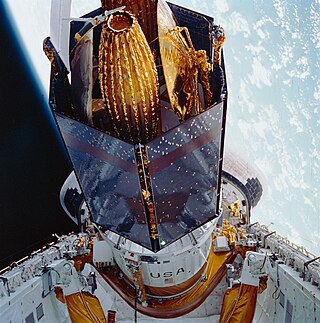
TDRS-3, known before launch as TDRS-C, is an American communications satellite, of first generation, which is operated by NASA as part of the Tracking and Data Relay Satellite System. It was constructed by TRW, and is based on a custom satellite bus which was used for all seven first generation TDRS satellites.

TDRS-7, known before launch as TDRS-G, is an American communications satellite, of first generation, which is operated by NASA as part of the Tracking and Data Relay Satellite System. It was constructed by TRW as a replacement for TDRS-B, which had been lost in the Challenger accident, and was the last first generation TDRS satellite to be launched.

USA-225, also known as the Rapid Pathfinder Prototype (RPP) and NRO Launch 66 (NROL-66), is an American satellite which was launched in 2011. The satellite is being used to perform technology demonstration and development experiments, including advanced dosimeters to characterize the space environment from a 1,200 kilometer low Earth orbit. It is operated by the United States National Reconnaissance Office.
USA-227, known before launch as NRO Launch 27 (NROL-27), is an American communications satellite which was launched in 2011. It is operated by the United States National Reconnaissance Office.
USA-229, known before launch as NRO Launch 34 (NROL-34), is a pair of American signals intelligence satellites which were launched in 2011. They are operated by the United States National Reconnaissance Office.
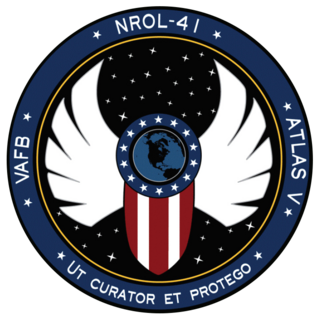
USA-215, also known as NRO Launch 41 or NROL-41, is an American reconnaissance satellite, operated by the National Reconnaissance Office (NRO). Launched in 2010, it has been identified as the first in a new series of imaging radar satellites, developed as part of the Future Imagery Architecture (FIA) programme, to replace the earlier Lacrosse spacecraft.
USA-234, also known as NRO Launch 25 or NROL-25, is an American reconnaissance satellite, operated by the National Reconnaissance Office. Launched from Vandenberg Air Force Base in 2012, it has been identified as the second radar imaging satellite to be launched as part of the Future Imagery Architecture programme.
USA-184, also known as NRO Launch 22 or NROL-22, is an American signals intelligence satellite, operated by the National Reconnaissance Office. Launched in 2006, it has been identified as the first in a new series of satellites which are replacing the earlier Trumpet spacecraft.















